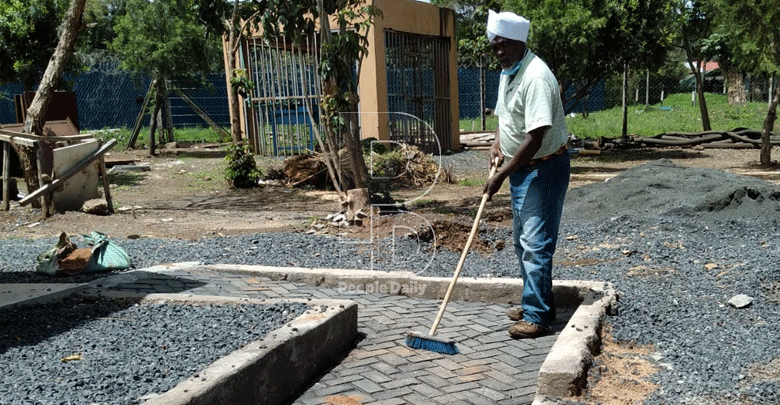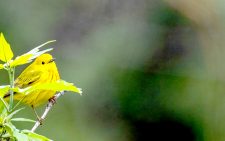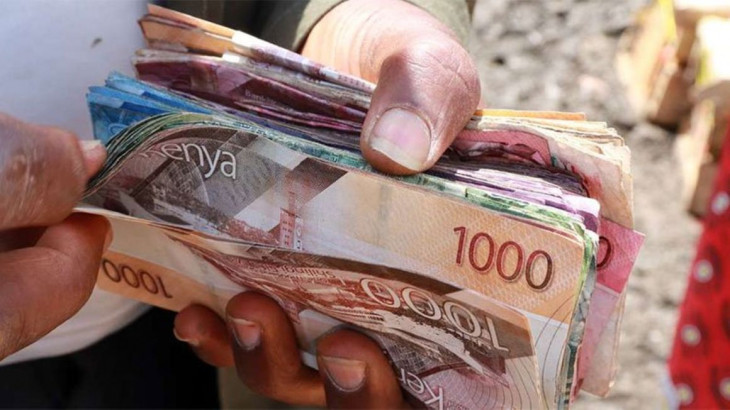Environmentalist flips masks into cabro

Francis Thuti uses waste to create cabro pieces to reduce impact of plastic on the environment and provide products for the paving market.
For more than three years, an environmentalist from Nanyuki town has been rummaging through the grimy mounds of garbage in the town’s vast dumping site, from where he crafts ingenious pieces of work.
Francis Thuti is on a mission to change the way society looks at garbage. Among his most remarkable products are cabro pieces made from waste plastics.
“These are very strong cabro pieces,” Thuti tells PD from his base in the dumpsites of Nanyuki, while proudly hoisting a black cabro piece, fashioned into a petal.
“They’ve been assessed for strength and determined to be three times sturdier than the conventional cabro. Several other shapes are available, from squares to diamonds,” says Thuti.
A key ingredient used in making of the cabro is the ubiquitous Covid-19 mask.
As the pandemic festers across the globe, one of the emergent problems has been the proliferation of Covid-19 masks.
The problem is particularly rife in Kenya, where the masks are often tossed with insouciant nonchalance to the environment after use.
A study by research scientist Gilbert Atuga of the Kenya Marine and Fisheries Research Institute (KMFRI) found that well over seven million masks end up in the environment after use every month, the result of heedless dumping by the population.
“If we assume that only one per cent of face masks are not correctly disposed of, then 7.14 million masks are likely to end up on land monthly with a bigger percentage ending up on rivers and the ocean, mainly during storm water runoff.
This translates to 28.6 thousand kilogrammes of plastics introduced to nature monthly from face masks alone,”Atuga states.
Thuti gathers an assortment of plastics, stuffs them in a cauldron, blends them with glass waste, which he grinds to a fine texture and heats the mixture to a sweltering 360 degrees celsius.
The resulting amalgam is poured while hot into shaping boxes, and then cooled using cold water.
“We heat to between 360-420 degrees celcius,” said Thuti. “It takes us between three to four hours to heat the mix to the desired level.
I mix all manner of plastics, save for PVC because it has a high concentration of chlorine and emits dangerous fumes”.
Perfect ratio
He uses a ratio to blend the plastic waste to achieve the desired effect.
“For a square metre of this cabro, I use 100kg of waste. There is 35kg of waste polythene paper, 35kg of waste plastic bottles and assorted plastics, and 30kgs of waste glass, ground to a flour.
I use a machine to grind the glass, which ensures there are no sharp particles in the ground glass,” he explains.
He burns all manner of plastics, from car bumpers to e-waste generated from discarded electronic equipment. The Covid-19 masks amount to two per cent of the amalgam.
“The mask is tossed whole into the mix, complete with the metal fastener.
“The mask is a polymer, made of the same material as the normal carrier bags used in Kenya,” Thuti says
Thuti has already submitted samples of his work to the Kenya Bureau of Standards for certification.
His work has already undergone laboratory tests conducted by the Ministry of Transport, Infrastructure, Housing, urban Development and Public Works.
The cabro are designed for use on walkways and car parking areas. He hires former street boys for the project.
The public is slowly warming up to Thuti’s product, persuaded by its material strength and pricing.
“People are loving my product. We are selling the cabro at the same price as the conventional cabro, which gives our product a relative advantage due to its longevity.
Besides cabro, Thuti, who identifies himself as a researcher, says he is working on a new concept that will build tiles using waste glass.
“I am using cement mixed with waste glass, of varying colours, to build tiles for use in terrazzo and kitchen surfaces,” Thuti said, showcasing a prototype of his upcoming product, adding,“I have already mapped out the design and the process, but I’m yet to perfect it.
His main challenge has been the lack of sufficient infrastructure for use in his projects.
For instance, he prepares the cabro in the open air, which becomes difficult in the rainy season, as he cannot sustain the furnace in wet weather.












